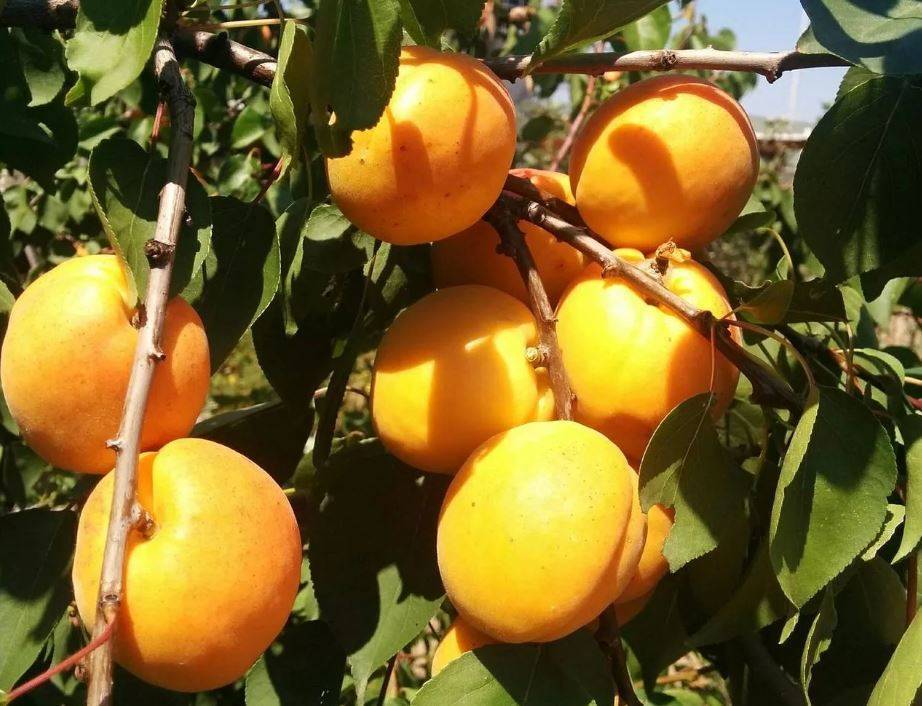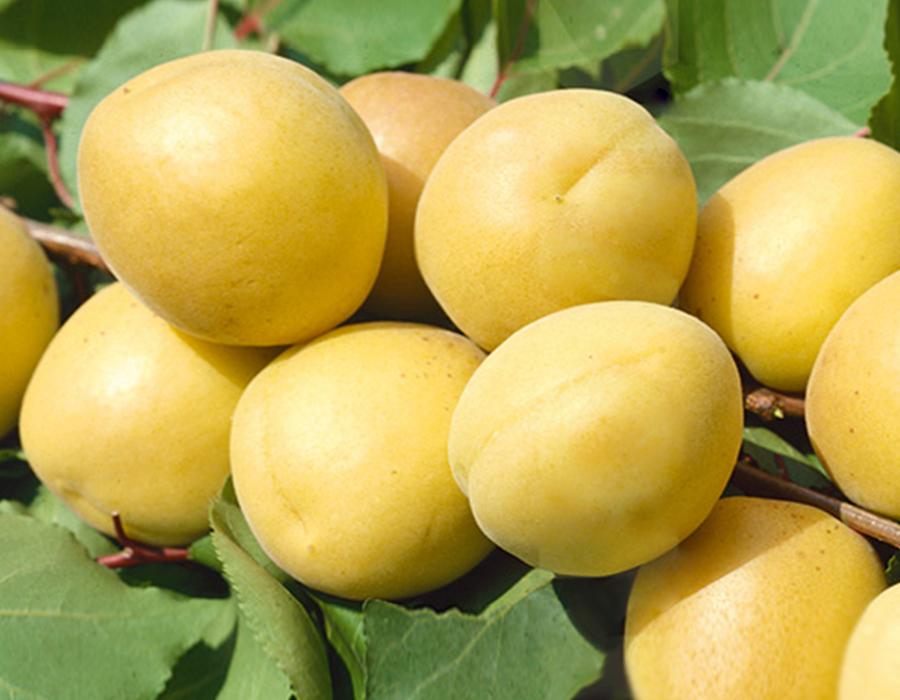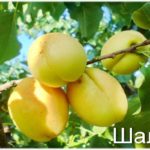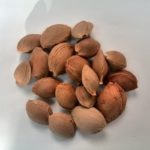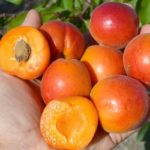Many gardeners are interested in the description of the Shalah (Yerevani) apricot variety, its planting and care. This culture is considered quite popular in Russia and other countries. This is due to the high yield, low maintenance requirements and excellent taste of the fruit. However, to obtain tasty and healthy fruits, you still need to comply with a number of requirements.
Description of the variety
The culture of this variety is medium in size. Trees do not exceed 2 meters in height. In addition, they have a moderate growth rate. In 1 year, the plant increases by 25-35 centimeters in height.The tree has a not very dense, but rounded and wide crown.
The leaves are large in size and heart-shaped. At the end of May and in the first half of June, the trees are covered with small flowers with a diameter of 3 centimeters. Flowering lasts only 1-2 weeks.
In mid-summer, the first fruits appear on the trees. Ripe apricots are characterized by quite large sizes. 1 ripe fruit can weigh 100-120 grams. At the same time, Shalah apricots are distinguished by their ovoid or oval shape. The skin has a smooth texture with small bumps. At the same time, the shade of the fruit varies. In most cases, apricots are orange in color with a slight reddish tint.
Advantages and disadvantages
This variety has many advantages. The main advantages of culture include the following:
- high resistance to moniliosis, clasterosporiosis, leaf curl;
- self-fertility of the plant;
- resistance to frost and drought;
- high yield.
At the same time, culture also has a number of disadvantages:
- deterioration in the taste of overripe fruits, the appearance of fibers in the structure of the pulp;
- falling of ripened fruits ahead of time;
- short shelf life;
- development of diseases due to stagnation of water.
How to plant
The culture of this variety is considered undemanding to care. However, you should be very careful when choosing a landing site. The tree responds well to light, systematic watering and fertilizing.
Apricot Shalah is recommended to be grown in well-lit areas that are reliably protected from strong winds and stagnant moisture. It is best to plant the plant in light and fertile soil. Before planting, it is recommended to add 1 bucket of compost and humus per 2 square meters to poor soil. It is worth adding an additional 1 kilogram of sand or sawdust to clay soil.
Seedlings should be purchased from nurseries or contacted from trusted suppliers. Planting work is recommended to be carried out in mid-spring or early autumn. However, you should not plant apricot near other stone fruit plants, such as peach, cherry, apple tree, and sweet cherry. The proximity to a pear tree is considered especially unfavorable.
Also, do not plant the plant near coniferous crops. Their litter provokes acidification of the soil, which negatively affects the development of the tree. At the same time, it is quite acceptable to place apricots near plums and berry bushes.
To plant plants, it is recommended to do the following:
- Dig holes measuring 70x70 centimeters. It is important to maintain a 5-meter interval between pits.
- Place a layer of small stones on the bottom.
- Soak the seedlings overnight in a solution of Kornevin or another growth stimulant.
- Place the plant in the central part of the recess and sprinkle with fertile soil.
- Compact so that the root collar is 5-7 centimeters above the ground surface.
- Water the plant with a bucket of warm water.
- Install a wooden peg and tie a seedling to it.
Features of care
To grow healthy plants, it is recommended to adhere to the following rules:
- Provide the crop with rare but abundant watering. In the first month, apricots should be watered at intervals of 3 days, and then done weekly.
- Apply fertilizer 2-3 times. In early spring it is recommended to use organic matter, and during flowering - superphosphate and potassium salt.
- Periodically loosen and weed the soil in the tree trunk circle.
- Mulch the tree trunk area. To do this, you need to place hay, sawdust or other materials in a layer of 10 centimeters.
- Carry out sanitary and formative pruning of apricot. This can be done in early spring or late autumn. This helps remove old branches and thin out the dense crown.
Experienced gardeners recommend shaking off all the flowers from a 4-year-old tree. This will ensure consistently high crop yields in the future.
How to properly harvest
Fruit ripening occurs around mid-July. In this case, the fruiting period lasts 7-10 days. You should not keep apricots on the branches for a long time. Overripe fruits quickly fall off, so the harvest is usually harvested immediately.
It is recommended to consume Shalah apricots fresh. They can also be subjected to heat treatment. The fruits are used to make jams, jams, compotes, and purees.
Apricot Shalah is a sought-after variety that has many advantages. This plant is characterized by high productivity and is considered undemanding to care. In order for the cultivation of a crop to be successful, it is still necessary to follow a number of rules of agricultural technology.

